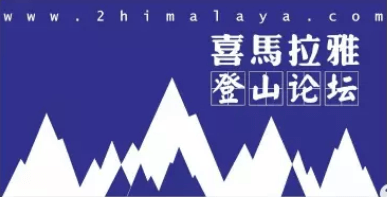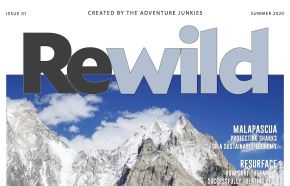General
Nanga Parbat Rupal Face Trek (2025-26)
The Nanga Parbat Rupal Face Trek is a memorable excursion through the picturesque Rupal Valley, culminating in stunning vistas of Nanga Parbat’s towering south face. This hike includes tranquil scenery, glacier crossings, and intimate interactions with one of the world’s most impressive mountain cliffs, making it ideal for both adventurers and nature lovers.
In addition to this trekking holiday, we offer a variety of other trekking adventures in the Himalayan region of Pakistan. Please see the table below for more details.
| Holiday Options | Price (USD) | Price (EUR) |
|---|---|---|
| Nanga Parbat Base Camp (9 days) | US$990 | EUR 925 |
| Nanga Parbat Base Camp & Hunza Valley (13 days) | US$1,490 | EUR 1390 |
| Around Nanga Parbat Trek (22 days) | US$2,990 | EUR 2780 |
| Nanga Parbat & K2 Base Camp Trek (26 days) - ALL INCLUSIVE | 2890 | EUR 2690 |
| Nanga Parbat & K2 Base Camp Trek (21 days) - TREKS ONLY | 2290 | EUR 2140 |
| Nanga Parbat Rupal Face Trek (12 days) - TREKS ONLY | 1600 | EUR 1,600 |
| Nanga Parbat Diamer Face Trek (10 days) - TREKS ONLY | 1300 | EUR 1,300 |
| Holiday Options | Price (USD) | Price (EUR) |
Dates & Cost – Nanga Parbat Rupal Face Trek
Summers are ideal for the Nanga Parbat Rupal Face Trek. The start and end dates in the table below are your arrival and departure dates from Pakistan. The months mentioned below are the ideal months for trekking in the Himalayas region of Pakistan. We have guaranteed departures every year. Our dates and costs for the trek are given below.
| Start Dates | End Dates | Price (USD) | Availability | Deposit | Registration |
|---|---|---|---|---|---|
| 20-Jun-2025 | 01-Jul-2025 | US$ 1,600 | Limited Space | US$ 260 | BOOK NOW |
| 20-Jun-2026 | 01-Jul-2026 | US$ 1,600 | Available | US$ 260 | BOOK NOW |
| Start Dates | End Dates | Price (USD) | Availability | Deposit | Registration |
Holiday Information
- Licensed professional guide (government requirement)
- Airport transfers on the first and last day
- All road transport in Pakistan
- Hotel accommodation in Pakistan (twin sharing rooms)
- Trekking accommodation in Pakistan (twin sharing tents)
- Hotel meals in Pakistan (breakfast, lunch and dinner)
- Trekking meals in Pakistan (breakfast, lunch and dinner)
- Trekking logistics (tents, non-personal equipments and tools)
- Support staff (cook, assistant(s) etc)
- Porters for trekking equipments, kitchen (supplies, tools, equipments, crockery, gas) and personal luggage
- Travel Insurance (recommendations only)
- Visa to Pakistan (supporting documents offered)
- International airfare
- Personal equipments (list provided on registration or request)
- Tips for guides, porters, staff etc
- Miscellaneous (drinks, phone calls, laundry, souvenir etc)
Itinerary – Nanga Parbat Rupal Face Trek
The itinerary for the Nanga Parbat Rupal Face Trek is given below.
Day 02: Drive to Chilas via Karakoram Highway
On this Day
GPS Data
Altitude: 1,265 m
The participants will drive to Chilas via Karakoram Highway. They will pass through Abbottabad, Mansehra, Besham, Dasu, and Sazin villages to reach Chilas. Participants will spend their night in Chilas.
Day 03: Drive to Tarashing Village
On this Day
GPS Data
Altitude: 2,900 m
On this day we will continue our journey on the off-road track on the Jeeps, it will take us around 4 to 5 hours to reach our first camp destination of Tarashing in the Rupal Valley. This valley is covered with Pine Trees and the meadows are lush green and magical. We will camp here at night.
Average trek time – 3 – 5 hours.
Day 04: Trek to Herrligkoffer Base Camp
On this Day
GPS Data
Altitude: 3,600 m
On this day we will continue our trek from Tarashing to Herligkoffer Base Camp (3600m). During the trekking, we will walk through the green fields and enchanting meadows and cross the snout of Tarashing Glacier. We will take a rest on the way and continue our trek towards the Herligkoffer Base Camp. Upon arrival here, we will camp next to Bazhin Glacier. From this point, we will have incredible views of Raikot Peak and Nanga Parbat Massif’s Chongra Peaks.
Average trek time – 3 – 5 hours.
Day 05: Trek to Latobah Base Camp (3,650m)
On this Day
GPS Data
Altitude: 3,650 m
On this day we continue our trek towards the well-known Latobah Campsite while crossing the Bazhin Glacier. The campsite is right under the largest wall which is the Rupal Face of the Killer Mountain – Nanga Parbat. The wall of Rupal rises 5000m to the summit and is a rare sight to experience.
Average trek time – 5 – 7 hours.
Day 06: Trek to Shaigiri (3,660 m)
On this Day
GPS Data
Altitude: 3,700 m
This day we will have a little longer trek than usual. On this day we will cross the snout of The Shaigiri Glacier. We will experience the amazing and enchanting view of the Rupal Face on this day.
Average trek time – 3 – 5 hours.
Day 07: Trek Back to Latobah Base Camp
On this Day
After breakfast at Shaigiri, return to Latobah Base Camp. The walk is around 6 kilometers long, takes about 5 hours, and has a climb of 30 meters and a descent of 239 meters. As you return to camp for the night, take in the stunning vistas of the majestic Nanga Parbat.
Day 08: Return trek to Tarashing Village
On this Day
After breakfast, start your full-day hike back to Tarashing Village. The trek takes around 7-8 hours, retracing the path via the Rupal Valley. Enjoy the gorgeous sceneries on your journey back to the settlement, where you'll end your hike and reflect on the breathtaking vistas of Nanga Parbat.
Day 09: Drive from Tarashing to Chilas
On this Day
Today, travel from Tarashing to Chilas, passing through the picturesque Astore Valley. Cross several bridges and make stops along the way to enjoy the valley. Enjoy lunch before continuing your trip to Chilas City, where you will arrive in the evening.
Day 10: Drive to Islamabad
On this Day
After an early breakfast, drive from Chilas to Islamabad. The journey takes you through breathtaking landscapes and down the Karakoram Highway, culminating in the capital city in the evening.
Day 11: Sightseeing in Islamabad
On this Day
Day 12: Fly to home country
On this Day
Why Register Early?
1. Early Bird Discount: The given prices for the holiday are limited-time discount offers and are subject to change. Service providers including (but not limited) to airlines and hotels increase prices in peak-season. Early reservations cost less than peak-season.
2. Limited Flight Seats: Domestic flight seats to the Karakorams and Himalayas are sold out way ahead of time because there are only two daily flights during peak season. Among other things, the deposit is used to book domestic flights for you in advance.
3. Pay Balance after arrival in Pakistan: In these unusual times, we appreciate that paying the final balance for your trip may cause concern. Our policy is to only receive your final balance once you arrive in Pakistan. The only payment before arrival is the deposit.
4. Deposit valid for 3 years: We understand the uncertainty surrounding the pandemic (Covid-19). As part of our relaxed booking conditions following Covid-19, deposits are valid for 2 years.
6. Pay Minimum Deposit: The deposits for the holiday are also early-bird discounts and automatically change accordingly:
- 1st October: USD 190
- 1st November: USD 290
- 1st January: USD 350
- 15th February: USD 400
- 1st March: USD 450
- 1st May: USD 490
Note: The same dates above apply to next season's deposits.
Refund Policy for All
Deposit: Once paid, the deposit is non-refundable (but valid for 2 years) as it will be spent on making in-country arrangements.
Balance: Pay the balance only after arrival in Pakistan on the first day. Payment guidelines will be shared timely.
Currency
All international travelers can pay in US Dollars (USD) or equivalent in Euros (EUR) or Pound Sterling (GBP). Pakistani travelers are charged the equivalent in Pakistani Rupees (PKR).
Single Supplement
Separate hotel rooms (single supplement) will cost an additional USD 290. This includes all hotel nights. This payment should be made with the balance upon arrival.
Separate tents (single tent) will cost an additional USD 180. This includes the cost of additional porterage. This payment should also be made with the balance in Pakistan.
| Apricot Tours' Social Responsibility |
| 1 foreign trekker = 5 trees |
| Apricot Tours will plant five trees for every foreign trekker who visits Pakistan for trekking to Nanga Parbat. The trees will be planted in the northern areas of Pakistan starting from 2019 as part of our CSR initiative. We aim to contribute to "Goal 13: Climate Action" of UN's Sustainable Development Goals by taking part in the massive government campaign to plant 10 billion trees during the next five years to tackle climate change. Pakistan's adverse climate impacts are very much visible through changing temperatures, prolonged droughts, increased floods and extreme weather conditions especially in Pakistan's mountain regions. Pakistan stands 7th on the list of countries that are mostly likely to be affected by global warming and has one of the highest deforestation rates in Asia. Decades of tree felling have reduced the country's forests to less than 3 percent of its total land area. How planting trees will make a difference? Planting trees will help save energy and money, cool our cities, reduce carbon emissions, reduce soil erosion, provide habitat for species of many kinds, provide clean water and add to the beauty of Pakistan's mountain region by simply being there. Our participants can also donate separately. Details on this initiative can be requested. |
Photo Gallery – Nanga Parbat Rupal Face Trek
Overview – Nanga Parbat Rupal Face Trek
The Nanga Parbat Rupal Face Trek is an exciting and visually stunning excursion across Pakistan’s rocky and tranquil Rupal Valley, located in the Astore District. This journey offers a breathtaking view of Nanga Parbat’s southern face, also known as the Rupal Face, which is notable for its 4,572-meter vertical ascent, making it one of the most spectacular mountain faces on Earth. The walk begins in the Rupal Valley’s beautiful green meadows and potato farms, where the towering Nanga Parbat, the world’s ninth-highest peak and Pakistan’s second-highest, gradually emerges at 8,126 meters.
The walk is more than simply a voyage into the mountains; it is also a cultural experience, as you travel through little communities populated by friendly residents who frequently discuss the fascinating stories surrounding Nanga Parbat. The mountain, known locally as Diamir, or the “Abode of Fairies,” is steeped in legend, with stories of a queen fairy living in a castle of crystal-clear ice guarded by snow serpents. The walk leads to the Rupal Base Camp, where hikers are rewarded with breathtaking views of the mountain’s massive south face, a wall of rock and ice that seems nearly impenetrable.
For those wanting a harder challenge, the walk includes the option of ascending to Mazino Pass at 5,400 meters, the hike’s highest point. This approach needs energy and commitment, but it offers some of the most stunning views of the Himalayan range, as well as an up-close look at Nanga Parbat’s towering ice crest. The walk also has non-technical glacier crossings, making it suitable for travelers with moderate expertise. Despite being less popular than the northern path to Fairy Meadows, the Rupal Face provides a more tranquil and intimate experience with Nanga Parbat, away from the crowds and in one of the Himalayas’ most lonely and untamed areas.
Website Last Updated: October 29th, 2024


















